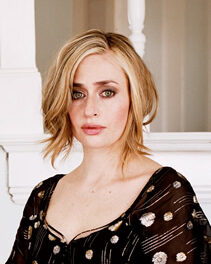The word Halloween is, of course, a corrupted contraction of “All Hallows Eve,” or the evening before All Hallows Day (All Saints’ Day). Thus on the day after what has become the candy makers’ boon, Catholics and many other high church Christian traditions celebrate the saints who have gone before us. To hear it done properly, you might attend a church that gives more than lip service to great music and that offers challenging preaching and vital service to the local and broader community of the world – a church like The Chapel of the Cross, in Chapel Hill.
The “Solemn Eucharist for the Feast of All Saints, November 1, 2005” began with organist/choirmaster Wylie S. Quinn, III playing Johann Sebastian Bach’s Passacaglia in C minor as the opening voluntary. (The fugue portion of this magnificent work was played as the closing voluntary.) Music of such artful power could not help but put the listener in touch with the best of the church’s saints. A craftsman of extraordinary humanity, skill, and – above all – dedication to the God of his faith, Bach intended every note he wrote to be an expression of his gratitude for the gift of life.
The service continued with a procession, incense, candles, prayers, scripture, chants, and a thought-provoking sermon delivered by Rev. Dr. Samuel Wells (Dean, Duke University Chapel). Using the story of the 12th-century Bernard de Clairvaux as a foundation over which to point out the differences between heroes and saints, he reminded the congregation that saints are neither perfect nor the center of the story: what matters are the faithful who allow their lives to be used for a higher good.
Quinn chose for the ordinary – sung in the proper places in the service – the Missa Pange Lingua of the 15th-16th-century Franco-Flemish composer Josquin Des Prez. The mass setting is based on the plainchant and motet Pange Lingua (“Sing, O tongue, the mystery of the glorious body”), and it is believed to be Josquin’s last mass setting. It is, in many ways, his closest to plainchant, composed in four voice parts with some strikingly beautiful duet sections in the Benedictus and Agnus Dei sections. The overall emphasis is on homophonic texture, with little polyphony. Like much of Josquin’s music, it is disarmingly transcendent. The a cappella singing of the choir was artistic, tempered, and tightly meshed. The duets, for soprano-alto and tenor-bass, exemplified why these portions of this mass are so well loved. The choir was clearly well prepared by Quinn.
For the offertory, the choir sang contemporary American composer Lee Hoiby’s “At the round earth’s imagined corners” (text from John Donne). It is justly one of Hoiby’s most successful and best-known anthems, balanced with quiet rich harmonies and soaring passages of adoration. The choir again acquitted itself impressively.
Mention must also be made of Quinn’s exquisite improvisations, especially after the Hoiby anthem and during the preparation for the communion. Beautiful references to other works performed in the service were bound together with well-shaped modulations giving the impression of a service seamlessly linked and underscored by the music. As mentioned above, the fugue portion of Bach’s Passacaglia and Fugue in C minor was the closing voluntary. Very few people left until the final triumphant chord of this almost universally recognized masterpiece died away in the beautiful sanctuary of The Chapel of the Cross.
Even though it was a long service (nearly two hours) at the end of a very stressful day, I left invigorated.
Note: The Chapel of the Cross also provides a series of noontime organ recitals on the great Kleuker organ in the church. Scheduled recitalists and other information on the “Bach’s Lunch” series of Tuesday concerts may be found in the CVNC calendar.











